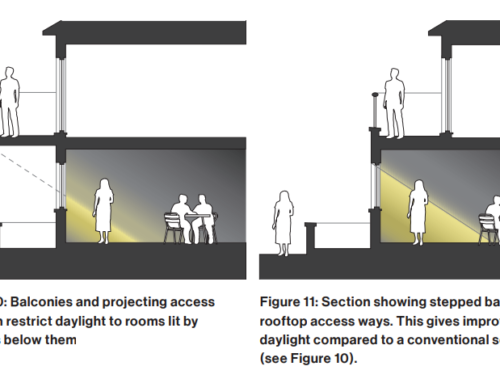In the challenging world of property development, grasping the details of a right to light can be vital for both property owners and builders. A light entitlement is a legal entitlement that enables a property to obtain daylight light through particular openings or vistas. As urban spaces become more crowded and new buildings rise, the maintenance of light access has become a important concern. This manual explores the importance of right to light surveys, which evaluate the impact of new developments on existing properties and guarantee compliance with legal rights.
Being aware of what a right to light survey entails and when to commission one can protect property owners and developers alike from financial issues. By analyzing the juridical history, distinctions between right to light and planning approval, and crucial factors for additions and new construction, this piece aims to prepare you with the essential information required to maneuver through the often complicated environment of daylight rights. Whether you are an intending builder or simply a concerned neighbor, understanding these rights is essential for achieving balance in property construction while safeguarding vital daylight light.
Comprehending Right to Light
The right to light is a statutory right that allows property owners to receive a certain degree of natural light through their glass. This right is acknowledged under UK common law in the United Kingdom and is typically gained through uninterrupted and unobstructed use of light for at least 20 years. When a building is developed in a way that blocks this light, the impacted property owner may have a claim to safeguard their light access, hence the necessity of comprehending this entitlement.
The idea of the right to light is not merely a matter of comfort; it can substantially influence the value of properties and the functionality of spaces. Builders must consider these rights when designing new developments or additions; neglect to do so could lead to litigation, holdups, and possible economic consequences. It is vital to recognize that right to light can affect a wide range of properties, particularly in urban areas where space limitations can lead to higher building densities.
To navigate these complexities, many property owners and developers choose to order right to light surveys. These evaluations assess the likely impact of new constructions on daylight access for surrounding buildings and help detect any likely violations before building begins. By recognizing and tackling right to light issues upfront, stakeholders can mitigate risks and ensure adherence with regulatory standards, leading to smoother construction processes.
Legal Implications and Adherence
Grasping the legal repercussions of light access is vital for both. A right to light is a legal right that permits property owners to receive daylight through specific openings, such as windows. If this right is infringed upon, it can lead to serious legal disputes. Developers must be aware that existing property rights can impact their plans, as not to address right to light issues may result in expensive changes or even stoppages.
Adherence with light access laws is essential in the design phase. Local governing bodies will consider the potential effect on light during the review process. Developers must provide sufficient evidence that their projects will not negatively affect neighboring properties' rights. This often involves commissioning comprehensive right to light surveys, which analyze the volume of light that reaches neighboring properties and recommend design alterations if necessary.

Not to observe right to light regulations can lead to court cases, with affected parties seeking solutions such as injunctions or damages. This highlights the importance of timely collaboration with right to light experts who can guide developers through the complexities of the law. Effectively managing this terrain not only protects the developer but also fosters positive relationships with local community, potentially facilitating the path to gaining permissions.
Right to Light Survey Procedure
The Right to Light survey procedure starts with an initialized consultation to determine the individual requirements of the property and the building plans in question. During this stage, a certified surveyor will collect relevant information about the current structures, including their altitude, orientation, and the surrounding area. This information will help determine if any possible light issues may occur due to new developments.
Once the basic data is obtained, the surveyor will use various methods and strategies to analyze natural light and solar exposure levels. This phase often comprises site visits to assess light situations and the use of 3D modeling to illustrate how proposed projects may impact light availability. The surveyor will also consult BRE guidelines, which provide industry standards to evaluate possible light issues and ensure adherence with legal expectations.
After completing the evaluation, a comprehensive Daylight and Sunlight report will be produced, detailing the results and suggestions. https://righttolightsurveyors.uk/best-right-to-light-london/ serves as essential documentation for planning applications and helps illuminate any likely Right to Light breaches. By grasping these findings, homeowners and developers can make wise decisions and take appropriate actions to resolve conflicts related to light rights.
